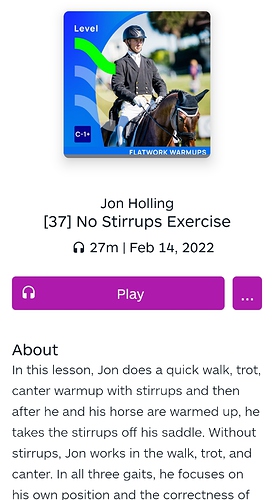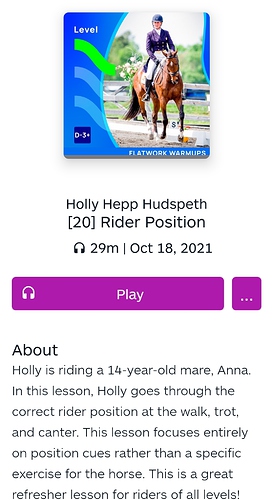Had a lunge lesson today and trainer says I have a tendency to move my hips too much at the canter. She says I don’t let the horse’s motion move my hips, I move them. When she would tell me to sit more still the horse would always break to a trot when she felt the resistance. I guess I need to video myself at the canter so I can see what she sees, because I definitely can’t feel it. I am feeling more confused now so I would love some feedback.
A little background: horse is a wonderful grade hony, but with a shorter stride. I am an adult rider in my late 30’s with some physical stuff going on myself (hyper-mobility and a foot disability.)

 but most of my lunge line lessons have had the horse in side reins, so the regular reins were just incidental and the lunger is in control of the horse.
but most of my lunge line lessons have had the horse in side reins, so the regular reins were just incidental and the lunger is in control of the horse.
 I know now that for sure I tense my seat when I’m doing lateral movements because of trying to position my legs for the movement , that’s when I was able to notice I do it. My seat becomes much more natural if I do some no stirrups work to allow my seat to just follow naturally. Even just a little each day I find helps to remind my seat to stay flowing and natural, without overdoing it. I do need/appreciate daily guidance to remind me to keep my position correct though so use these two lessons on Ride iQ regularly.
I know now that for sure I tense my seat when I’m doing lateral movements because of trying to position my legs for the movement , that’s when I was able to notice I do it. My seat becomes much more natural if I do some no stirrups work to allow my seat to just follow naturally. Even just a little each day I find helps to remind my seat to stay flowing and natural, without overdoing it. I do need/appreciate daily guidance to remind me to keep my position correct though so use these two lessons on Ride iQ regularly. 
